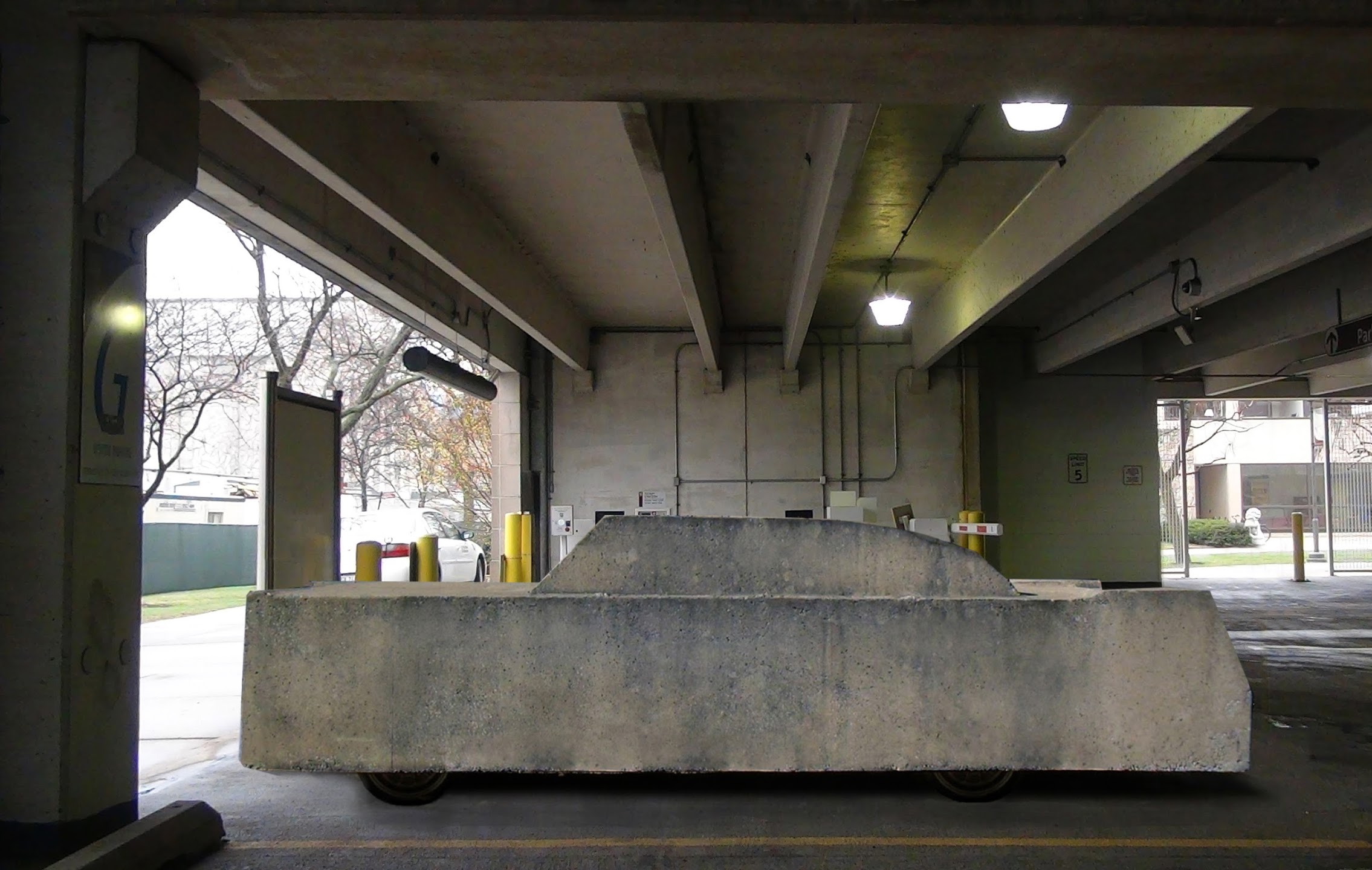German artist Wolf Vostell is perhaps most famous for a performance in which he toted a gas mask and threw smoke bombs at viewers on the anniversary of Hitler’s suicide. It was 1964 and like many artists at the time, Vostell was an agitator, protestor, and provocateur. When the newly minted Museum of Contemporary Art invited Vostell to make a public sculpture for Chicago in 1969, his response was a Cadillac De Ville mummified in gray concrete and plopped on a city street in River North.
Titled Concrete Traffic, Vostell’s Cadillac was an anti-monument to American hypocrisy—the artist's way of joining the street protests fighting police brutality, inequality, and the Vietnam War. Vostell died in 1998, mostly unknown by U.S. audiences. Even the 1970 unveiling of Concrete Traffic was sparsely attended, and the Chicago Tribune dedicated this headline to the opening: “Recipe for Instant Art Work: Take a Cadillac, Add Cement.” Eventually, the MCA gifted the 16-ton sculpture to the University of Chicago, where it sat for decades and slowly decayed in the dark.
Over the next forty years, “Concrete Traffic” succumbed to winters of Chicago’s abrasive ice and acid rain. Its windshield caved in, and someone made a shoddy job of concrete patches. Eventually, the sculpture was stashed it in a warehouse when construction on the Logan Arts Center began.
Enter Dr. Christine Mehring, a world-renowned specialist in 20th-century German art. Mehring is a professor at the University of Chicago and the chair of a university committee that oversees campus artwork. “My jaw dropped,” recalls Dr. Mehring when she first encountered Concrete Traffic in the storage facility. “I will never forget that moment. I laughed but I also cried. I never felt like I had such a responsibility to take care of a public sculpture, but it also felt like, I don’t even know how to begin to take on this massive project.”
Over the next four years Mehring consulted dozens of experts from around the globe. She hired Amanda Trienens, a concrete-structure conservator who worked on the façade of New York’s Guggenheim Museum. She brought Stephen Murphy to look at the rusting car beneath concrete; he happens to be a vintage Cadillac specialist and the classic car curator for local businessman Richard Driehaus. Mehring held graduate seminars on the sculpture, convened scholarly workshops, and won $125,000 in grants to repair the decaying work.
Now, Concrete Traffic makes a triumphant return to Chicago’s streets with a city-wide procession on September 30 from Humboldt Park to Hyde Park with stops at the MCA and the Arts Club of Chicago, to its new permanent home in a parking garage adjacent to the Smart Museum of Art. There, it will continue to surprise drivers, and remind us of Chicago’s weighty past.



